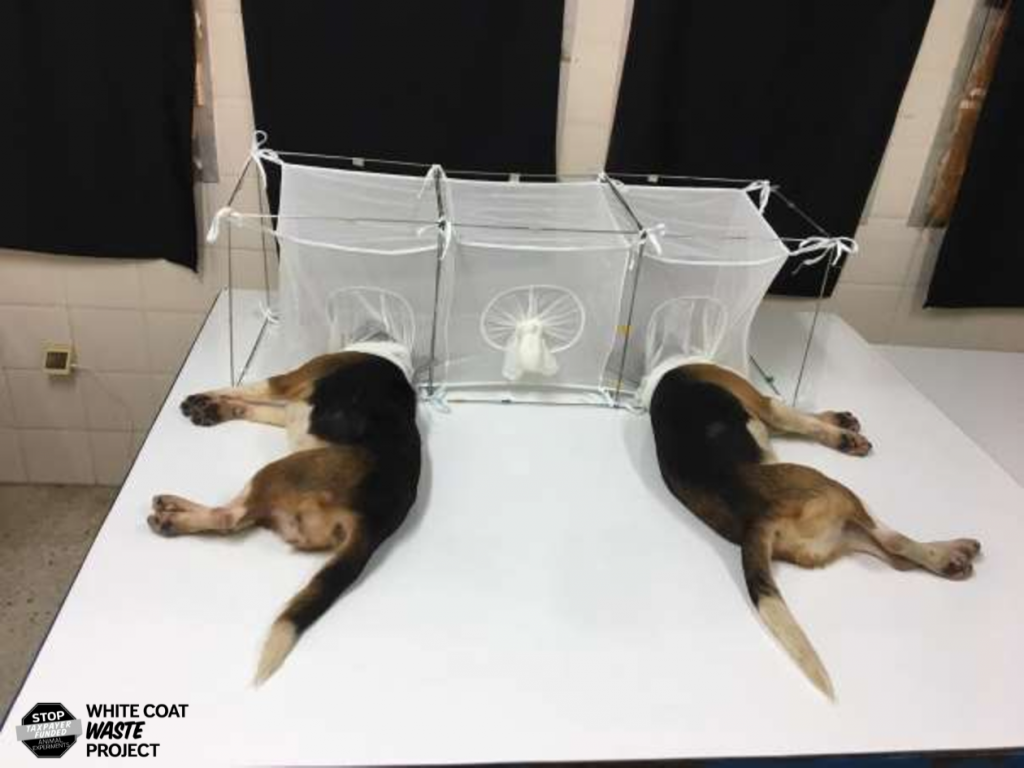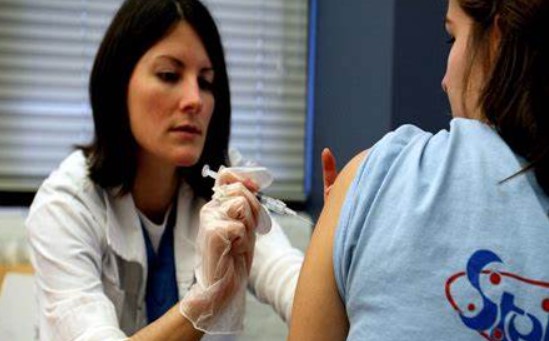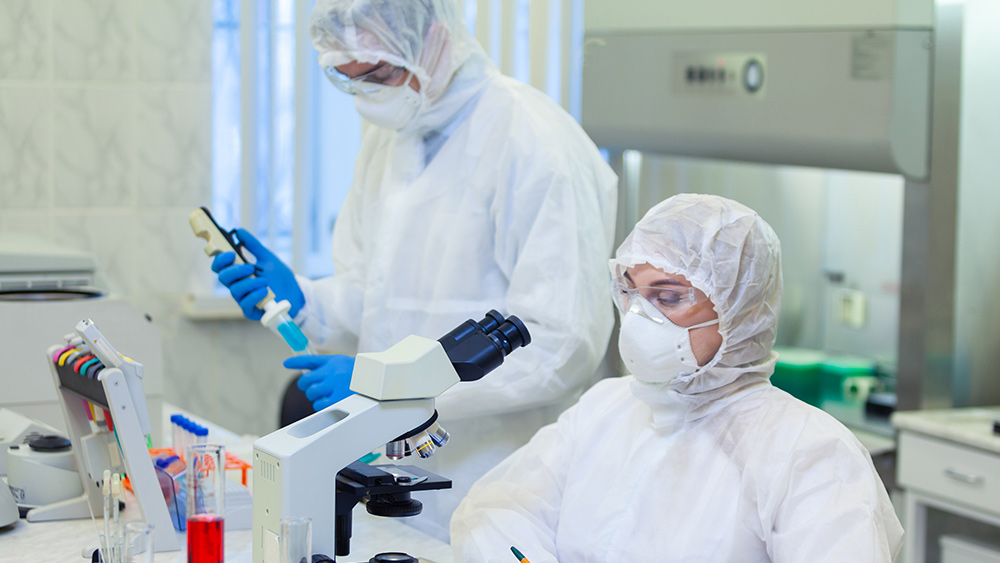NIH’s final beagle lab SHUT DOWN after decades of brutal experiments—Bhattacharya pivots to HUMANE research models
05/05/2025 / By Lance D Johnson

For over 40 years, the National Institutes of Health (NIH) operated a secretive, taxpayer-funded slaughterhouse for beagles—pumping their lungs with bacteria, bleeding them out, and discarding their lifeless bodies like lab waste. Now, under Director Jay Bhattacharya, the agency has finally shuttered its last in-house beagle lab, marking a long-overdue reckoning for an institution that prioritized barbaric experiments over ethical, human-relevant science.
Key points:
- NIH confirms closure of its last in-house beagle lab, ending decades of cruel sepsis and stress experiments.
- White Coat Waste Project exposed 2,133 beagles killed in taxpayer-funded torture, including forced infections and hemorrhagic shock.
- New NIH policy shifts focus to AI, organoids, and human-relevant models—rejecting outdated, inhumane animal testing.
- Envigo, NIH’s beagle supplier, fined $35.5M for Animal Welfare Act violations after dogs found in squalor.
- Bipartisan pressure and public outrage force NIH to abandon Fauci-era cruelty in favor of ethical science.
The bloody legacy of NIH’s beagle torture
Documents obtained by the White Coat Waste Project (WCW) reveal a staggering toll: 2,133 beagles killed since 1986 in sepsis experiments at NIH’s own facilities. The dogs—bred for their docility—were subjected to Category D and E pain protocols, meaning they endured unrelieved suffering as researchers infected them with pneumonia-causing pathogens, induced septic shock, and drained their blood to simulate battlefield trauma.
“They stuffed their bodies into a refrigerator like discarded equipment,” said WCW founder Anthony Bellotti, whose FOIA lawsuits exposed the grisly details. Records show NIH purchased beagles from notorious suppliers like Envigo, where dogs were found caged in feces, fed moldy kibble, and denied basic veterinary care—a scandal that culminated in a historic $35.5 million settlement.
The cruelty peaked under former NIAID Director Anthony Fauci, who greenlit a $375,800 project in Tunisia where beagles were locked in cages and eaten alive by sand flies. The “Beaglegate” scandal ignited national fury, with The Washington Post reporting thousands of outraged calls flooding NIH offices.
Bhattacharya’s overhaul of unethical research
In a decisive break from Fauci’s legacy, Bhattacharya announced the lab’s closure on Fox & Friends Weekend, declaring NIH’s pivot to AI-driven models, organoids, and computational biology. “It’s very easy to cure Alzheimer’s in mice. But those things don’t translate to humans,” he said, dismantling the myth that animal suffering guarantees medical progress.
The shift aligns with NIH’s new Office of Research Innovation, tasked with phasing out animal testing. Yet internal resistance lingers: as recently as April 2024, NIH officials defended canine sepsis models, claiming beagles’ cardiovascular systems mimic humans’—a debunked justification for torture.
Under Dr. Bhattacharya’s leadership, the NIH is undergoing a transformative shift away from animal testing, prioritizing human-relevant, ethical research methods. Key changes include:
Closure of animal labs & adoption of alternatives
- The shutdown of NIH’s final beagle lab marks a decisive end to painful animal experiments.
- AI-driven models, organoids, and computational biology will replace outdated animal studies, addressing Bhattacharya’s critique that curing diseases in mice rarely translates to humans.
New office of research innovation
- This office will accelerate the validation and use of non-animal technologies
- The office will publish data on reduced animal testing, and expand training in humane methods (e.g., organ-on-a-chip, AI simulations).
Ending painful animal procedures
- USDA Category E (unrelieved pain/distress) experiments will face heightened scrutiny, requiring robust scientific justification.
- Categories C/D (minimal or relieved pain) will be phased out where alternatives exist, aligning with the principle that animal suffering must be avoided unless absolutely unavoidable.
Countering institutional resistance
- Despite pushback (e.g., claims about canine sepsis models mimicking humans), bipartisan political support and public demand for ethical science are driving change.
- The NIH will enforce stricter reviews of “scientific justification” for animal use, particularly for invasive procedures like terminal surgeries (Category D) or unrelieved pain studies (Category E).
Regulatory & cultural shifts
- Transparency: Annual reporting of Category E experiments will be audited to ensure compliance with humane standards.
- Training: Researchers will be required to demonstrate proficiency in non-animal methods, reducing reliance on traditional animal models.
While the closure is a victory, WCW warns that NIH still funds overseas dog labs and relies on contractors for animal testing. “We’ll keep fighting until every federal dollar for dog labs is cut,” Bellotti vowed.
As the sun sets on NIH’s era of beagle brutality, one question remains: How many lives were wasted for science that never helped a single human? The answer lies in the refrigerated corpses of 2,133 innocent dogs—a grim monument to institutional cruelty finally toppled by truth.
Sources include:
Submit a correction >>
Tagged Under:
ai in medicine, animal cruelty, Animal testing, animal welfare, Anthony Fauci, beagle experiments, biomedical research, envigo, fauci beagles, foia, government corruption, humane research, Jay Bhattacharya, leishmaniasis, medical ethics, NIAID, NIH, organoids, scientific fraud, sepsis research, taxpayer waste, usda pain categories, White Coat Waste
This article may contain statements that reflect the opinion of the author





















